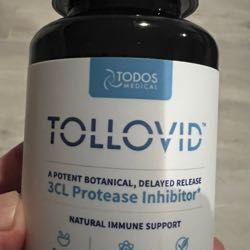Catching Alzheimer’s before Memory Slips Can a
Post# of 30084

Can a five-minute eye-tracking test warn of disease to come?
February 12, 2015 |By Esther Landhuis
Several scientists outside the company think the test is promising because, unlike other cognitive batteries, it requires no language or motor skills.
Credit: Vince Alongi/Flickr
Whereas cholesterol levels measured in a routine blood test can serve as a red flag for heart disease, there’s no simple screen for impending Alzheimer’s. A new Silicon Valley health start-up hopes to change that.
A half million Americans die of Alzheimer’s disease each year. Most are diagnosed after a detailed medical workup and extensive neurological and psychological tests that gauge mental function and rule out other causes of dementia. Yet things begin going awry some 10 to 15 years before symptoms show. Spinal fluid analyses and positron emission tomography (PET) scans can detect a key warning sign—buildup of amyloid-beta protein in the brain. Studies suggest that adults with high brain amyloid have elevated risk for Alzheimer’s and stand the best chance of benefiting from treatments should they become available.
Getting Alzheimer’s drugs to market requires long and costly clinical studies, which some experts say have failed thus far because experimental drugs were tested too late in the disease process. By the time people show signs of dementia, their brains have lost neurons and no current therapy can revive dead cells. That is why drug trials are looking to recruit seniors with preclinical Alzheimer’s who are on the verge of decline but otherwise look healthy. This poses a tall order. Spinal taps are cumbersome and PET costs $3,000 per scan. “There’s no cheap, fast, noninvasive test that can accurately identify people at risk of Alzheimer’s,” says Brad Dolin, chief technology officer of Neurotrack. The company is developing a computerized visual test that might fit the bill.
Several scientists outside the company think the test is promising because, unlike other cognitive batteries, it requires no language or motor skills. Participants simply view images on a monitor while a camera tracks their eye movements. The test draws on the research of Neurotrack co-founder Stuart Zola of Emory University who studies learning and memory in monkeys. When presented with two images—one novel, the other familiar—primates will fixate longer on the novel one. If the hippocampus is damaged, as it is in Alzheimer’s, however, the subject spends equal time looking at each image.
The monkey findings seem to hold in people. In a five-year study investigators gave the half-hour test to 92 seniors. Sixty were cognitively normal and 32 had a mild impairment that often precedes full-blown Alzheimer’s. With the test scores the researchers could predict—three years in advance—who in the normal group would become impaired and which of the mildly impaired patients would later develop Alzheimer’s.
The company has since developed a five-minute Web-based version of the test that uses basic Webcams to capture eye movements. The original setup, which uses an infrared eye-tracking device, costs around $60,000. If shown to work reliably, the online test could become an affordable tool for widespread screening, enabling doctors to see who is at risk for Alzheimer’s three to six years before symptoms emerge.
At the CNS Summit held in November, Dolin reported that the five-minute Webcam approach computed scores with essentially the same accuracy as the eye-tracker system. Furthermore, scores on the five-minute online test seem align with scores on the original half-hour version, he says. But the company still needs to show that its online test predicts which otherwise healthy seniors will develop Alzheimer’s.
To get that data, the company launched a three-year study last October to test its eye-tracking assessment with 3,000 seniors in Shanghai. Participants will take Neurotrack’s test along with cognitive exams and blood tests at the start of the study and yearly thereafter for three years. Additional U.S. studies funded by Neurotrack will evaluate the company’s technology alongside PET and other measures for identifying healthy people on a path toward Alzheimer’s. In addition, several pharmaceutical companies are including Neurotrack in clinical trials of experimental Alzheimer’s therapies. In all, more than 6,000 people will take the Neurotrack test, says co-founder and CEO, Elli Kaplan.
Neurotrack is just one of various approaches researchers are exploring as cheap, easy measures of presymptomatic Alzheimer’s. Others are looking to glean such info from blood tests, retinal scans and computerized cognitive tests. But at this point, it is unclear if one test is better—and more likely, several will be used to assess the disease’s progression, according to Peter Snyder, professor of neurology at Brown University’s Alpert Medical School.
 (0)
(0) (0)
(0)